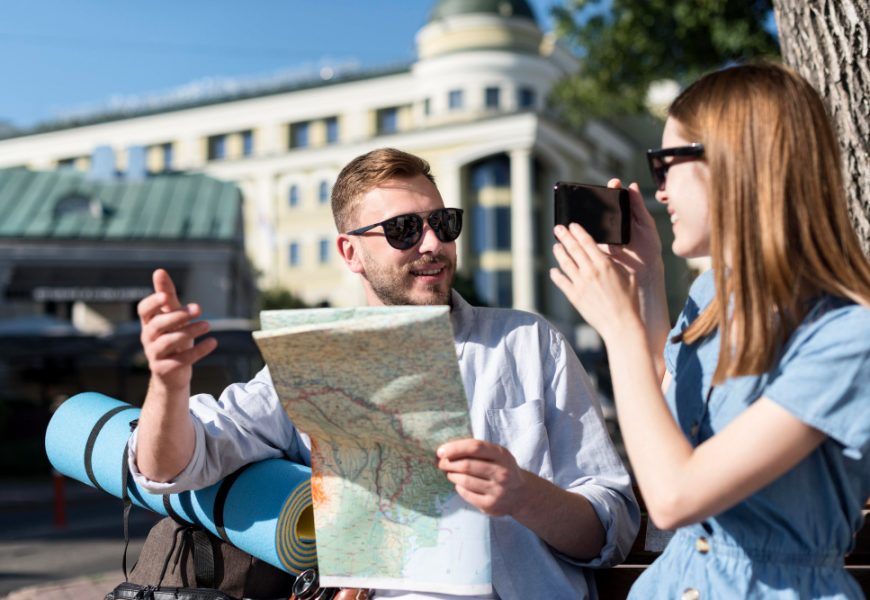How the Traveler’s Fresh Perspective Breaks Through Layers of Familiarity
When people step into a new city, their vision seems to transform. What locals regard as ordinary—an oddly shaped balcony, a colorful mural half-faded by weather, or the subtle shadow cast by a unique rooftop—often bursts into sharp focus for travelers. This heightened sensitivity is not simply a matter of “looking harder”; it emerges from the contrast between the weight of familiarity and the openness of discovery.
Locals gradually accumulate a protective layer of familiarity over their surroundings. Daily routines impose a rhythm that greys out fine textures of experience. For example, the caretaker passing under the same carved doorway each morning may no longer take note of the intricate flower motif etched into the wood. To them, the door is not an object of curiosity but an obstacle to push open en route to work. Travelers, on the other hand, having no such routine relationship with the space, pause where others hurry. Their eyes linger, unhindered by the haze of repetition, and the details—once invisible—emerge with vivid clarity. A city that feels predictable to its residents transforms into a gallery of surprises for the visitor, woven with quirks and subtleties that only freshness of perspective can reveal.
Why Local Habituation Functions Like a Gentle Blindfold
Neuroscientists describe habituation as the mind’s way of conserving energy. When a sensory pattern repeats often enough, the brain deems it non-essential and fades it into background noise. This is why someone living beside a train track may sleep peacefully through the clamor, while a guest struggles with every passing rumble. The same principle applies to vision and attention in familiar neighborhoods.
For locals, cobblestones underfoot cease to be noticed; they are merely a surface to navigate. The hum of traffic becomes a neutral soundtrack rather than a source of curiosity. Storefronts that once gleamed new dissolve into faceless structures, no longer inviting a second glance. Habituation ensures efficiency: imagine if one had to re-appreciate every lamppost or carefully inspect every passerby daily; life would grind to a halt under the weight of constant observation.
Travelers, however, encounter none of these neural filters. They have just arrived, and their brains have not yet ruled any feature as unimportant. The particular arrangement of balconies, the rhythm of footsteps in a crowded alley, or the abrupt tilt of rooftops may suddenly strike them as distinctive. What the local mind erases to preserve daily functionality becomes, for the traveler, an entire archive of fresh impressions.
The Role of Selective Attention in Shaping Perception
Selective attention is the mind’s powerful ability to tune into certain inputs while silencing others. Everyday life requires it—otherwise, the world would overwhelm us with unfiltered detail. But this filtering comes at a cost: vast portions of experience fade into invisibility. Locals walking to work focus on crossing safely, arriving on time, or handling errands. Their mental spotlight is narrow and functional, aimed at necessities rather than subtleties.
Travelers place that spotlight differently. Their selective attention widens, scanning for signals of meaning in every corner. Neuroscience helps explain this shift: novelty triggers dopamine activity, sharpening alertness and making the unfamiliar stand out more sharply. With cultural studies layered on, we see that travelers are not simply passive observers but active interpreters, hungry to decode the symbols, gestures, and aesthetics that distinguish one place from another.
This psychological recalibration means that a traveler may notice fleeting micro-expressions on a shopkeeper’s face, hear the inflections in street sellers’ songs, or admire the variety of tilework around windows. Locals are not blind to these details by ability but by priority—their attention is guided elsewhere. Observation is not mechanical; it is deeply shaped by one’s role, purpose, and expectations.
How Journeying Reframes Perception Itself
Travel is more than movement; it reorganizes the brain’s hierarchy of significance. When people journey to unfamiliar places, they implicitly give themselves permission to pause and perceive. Patterns, scents, and fragments of sound take on amplified importance, as though every detail is a potential clue to decoding the identity of a culture.
This reframing explains why travelers delight in overhearing snippets of conversation that locals dismiss as ordinary chatter, or why ornate ironwork on windows draws admiring photographs while residents barely register its existence. Daily efficiency encourages locals to treat such fragments as invisible; their goals hinge on social roles—commuting, working, parenting—rather than aesthetic exploration. Travelers, however, prioritize meaning and memory over speed. Their task is to absorb, remember, and translate experiences into stories or impressions.
In that sense, travel is less about geography than about perception. It relocates attention, changing what the mind decides is worth noticing. Town squares, narrow alleys, tea aromas wafting from corner cafés—these are not inherently more vivid for outsiders, but travel primes the mind to cherish them as extraordinary. Locals could rediscover the same vibrancy, and occasionally do, through intentional acts of seeing anew. Yet the visitor arrives already wrapped in this state of hyper-awareness, liberated from routine and trained to cherish detail.
Final Reflection
Travelers notice what locals miss not because they have sharper eyes, but because their consciousness has been re-tuned by novelty, curiosity, and expectation. Locals filter for survival, efficiency, and routine, while visitors open their senses in search of meaning and discovery. In this interplay lies a quiet lesson: the world is always filled with details—quirky balconies, murals fading like watercolor, windows adorned with forgotten craftsmanship. Whether they glow or fade depends not on their presence, but on the rhythm of our attention.
For travelers, that rhythm slows, expands, and celebrates. For locals, it accelerates and economizes. Yet anyone, resident or visitor, can choose to borrow the traveler’s mindset—to pause, to notice, and to let the invisible surface again in all its quiet brilliance.








